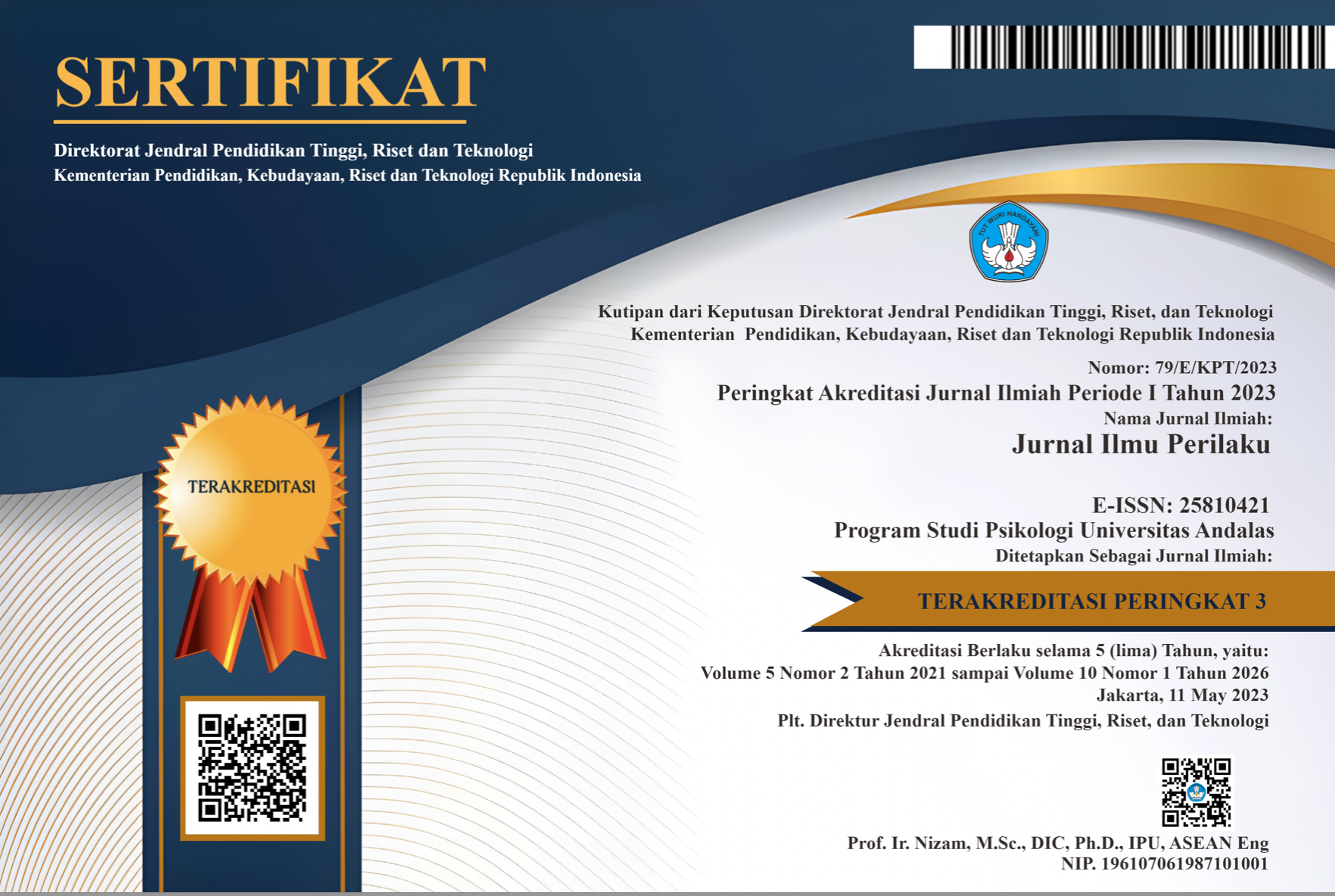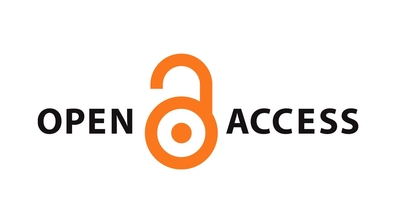Tradisi Luru Duit di Indramayu
Abstract
Child prostitution in Indramayu has been done for generations and has been formed into a tradition. Prostitution in Indramayu known as the luru duit meaning work for money or livelihood. Referring to the meaning of luru duit, shows that prostitution has been accepted as a form of work, similar to another forms of work. This study aims to identify the factors that influence luru duit phenomenon. Research uses the Etno-phenomenological method. Collecting data through interviews, observation and documents. The result shows luru duit is a planned behavior, it can be seen from three factors interacting. Internal factors include a positive attitude on materialism, the motivation to follow the views of others, the perception of ease on doing luru duit. External factors include micro and macro level. At the micro level includes the ability to access opportunities, namely the lack of jobs and poor education. At the macro level includes social situations, for example, early marriage and divorce as well as the situation of a long history of forming Bong village as the sender area of women for prostitution. The phenomenon of luru duit facilitates by the presence of the figure of the channel. Chanel as a liaison has amode in two ways, namely using violence method, coercion and fraud. The second way is to utilize the victim and the victim's parents desire for a better life in a way to seduce with money.
Downloads
References
Bandura, A. (1989). Social cognitive theory. In R. Vasta (Ed.). Greenwich, CT: JAI Press.
Birech, J. (2013). Marriage: A cultural health phenomenon. International Journal of Humanities and Social Science. 3 (17). (97-103).
Bulatao, R. A. (1975). The value of children: Across national study. Hawaii: East West Population Institute.
Budi. (2015). Kabupaten Indramayu jadi penyuplai terbanyak di Saritem. Diakses di http://fokusjabar.co.id (tanggal & Januari 2017)
End Child Prostitution, Child Pornography and Trafficking of Children for Sexual Purposes (ECPAT). (2008). Memerangi Pariwisata Sex Anak: Tanya Jawab. Bangkok: ECPAT.
Grace, G. L., Starck, M., Potenza, J., & Sheetz, H. A. (2012). Commercial sexual exploitation of children and the school nurse. The Journal of School Nursing. 28 (6), 410-417.
Hilbert. R. A. (1986). Anomie and the moral regulation of reality: the durkheimian tradition inmodern relief. Sociological Theory, 4(1), 1-19.
Hirschi, T. (1969). A Control theory of delinquency. Reprinted from Causes of Delinquency. California: University of California Press.
Hwang, S. L., & Bedford, O. (2003). Precursors and pathways to adolescent prostitution in Taiwan. The Journal of Sex Research, 40 (2).
International Labour Organization. (ILO). (2004). Perdagangan anak untuk tujuan pelacuran di Jakarta dan Jawa Barat: Sebuah kajian cepat. Geneva Switzerland. Bureau International Labour Office.
International Labour Organization. (ILO). (2005). Guidelines for legislation and law enforcement : Special action programme to combat forced labour. Geneva : Bureau International Labour Office.
Imelda, Debora, J. Marthini, T., & Setyawati, L. (2004). Utang selilit pinggang: System ijon dalam perdagangan anak perempuan. Yogyakarta : Pusat Studi Kependudukan dan Kebijakan Universitas Gadjah Mada.
Jones. G.W. dkk. (1994). Divorce in West Java. Journal of Comparative Family Studies, 25(3) 395-416.
Kasser, T. (2002). The high price of materialism A Bradford Book. London : The MIT Press.
Koentjoro. (1998). Pelacur anak – anak dan jaringanya : Studi kasus di Yogyakarta. Semiloka Nasional Prostitusi Anak Dan Industry Pariwisata, diselenggarakan Oleh Pusat Penelitian Pengembangan Pariwisata UGM, ILO di Yogyakarta tanggal 1-2 Juli 1998.
Koentjoro. (2004). On the spot: Report from the nest of prostitutes. Yogyakarta: Tinta.
Koentjoro, & Fitriana, N. (2011). Prostitution in Indonesia. Dalam Dalla, R. L., Baker, L. M., DeFrain, J., & Williamson, C. (Eds.) (2011), Global Perspectives on Prostitution and Sex Trafficking: Africa, Middle East, Asia, & Oceania. Landham, MD: Lexington Publishers, Inc.
Kusumawardhani. (2010). Human trafficking: Pola pencegahan dan penanggulangan terpadu terhadap perdagangan perempuan: laporan akhir penelitian (Laporan penelitian tahun II: studi kasus pola pencegahan dan penanggulangan terpadu terhadap perdagangan perempuan di Propinsi Jawa Barat. Laporan Penelitian. Pusat Penelitian Kemasyarakatan Dan Kebudayaan Lembaga Ilmu Pengetahuan Indonesia PMB- LIPI, Jakarta.
Lung. W., Lin T.J., Ching. L. Y., Shu. C. B, (2004). Personal characteristics of adolescent prostitutes and rearing attitudes of their parents: A structural equation model. Psychiatry Research, 125. 285–291.
Medora, N. (2011). Prostitution in India: A global problem. Dalam Dalla, R. L., Baker, L. M., DeFrain, J., & Williamson, C. (Eds.) (2011), Global Perspectives on
Prostitution and Sex Trafficking: Africa, Middle East, Asia, & Oceania. Landham, MD: Lexington Publishers, Inc.
Muflichah. S. (2009). Trafficking: Suatu studi tentang perdagangan perempuan dari aspek budaya, sosial, ekonomi di kabupaten Banyumas. Jurnal Dinamika Hukum. 9(1), 125-134.
Pattilima, H. (2005). Perdagangan anak: Kasus Indramayu. Semiloka Nasional Upaya Penghapusan Trafiking Perempuan dan Anak. Hotel Salak Bogor, Jawa Barat 19-21 Desember 2015.
Rosenberg, R. (2003). Perdagangan perempuan dan anak di Indonesia. Jakarta : USAID bekerjasama dengan ICMC dan ACILS.
Soares, J. R. (2011). Meraba realitas pelacuran anak: Antara mengadili dan mencari solusi. Buletin Makna, Volume 1.
Stoebenau, K. (2008). The "prostitute" and "sex worker" identities in Antananarivo, Madagascar. International Journal of Feminist Approaches to Bioethic. 2(1) 102-120.
Suyanto, B. (2002). Perdaganganan anak perempuan: Kekerasan seksual dan gagasan kebijakan.Yogyakarta : Ford foundation dan PSKK UGM.
Suyanto, B. (2012). Kisah tragis anak perempuan di industri seksual komersial. Jurnal Masyarakat, Kebudayaan dan Politik. 25(3), 163-173.
Suyanto, B. (2013). Child trafficking dan industri seks global. Global & Strategis, 7(1), 139-154.
Tumlin, K.C. (2000). Trafficking in children and women in Asia : A regional overview. Maklah. Paper presented di forum ILO-IPEC dan Institute for Asian Studies Chulangkorn University, Bangkok.
Komisi Perlindungan Anak Indonesia (2001). Undang-Undang No 23 tahun 2002 Tentang Perlindungan Anak. Diunduh dari www.kpai.go.id.
Undang-Undang Republik Indonesia No 21 tahun 2007 tentang Tindak Pidana Perdagangan Orang. Diunduh dari pih.kemlu.go.id
Uchrowi, Z. (2003), Menggagas renaissance Indonesia: Refleksi kebangsaan seorang muslim. Republika: Jakarta.
United Nation of Childrens Fund (UNICEF). (2001). Children on the edge protecting children from sexual exploitation and trafficking in East Asia and the Pacific. UNICEF East Asia and Pacific Regional Office.
United Nation of Childrens Fund (UNICEF). (2012). Child maltreatment: prevalence, incidence and consequences in the East Asia and Pacific region: A systematic review of research strengthening child protection systems series: No 1, UNICEF East Asia and Pacific Regional Office.
Qayyum, S., Iqbal, M.M.A, Akhtar, A., Hayat, A., Janjua, I.M., & Tabassum. S. (2013). Causes and decision of women’s involvement into prostitution and its consequences in punjab, Pakistan. Academic Research International. 4(5), 398-411.
Romanow, L. (2012). The women of thailand. Global Majority E-Journal. 3(1). 44-60.
Wibowo, E.A. (2014). Kisah Wanita Penghibur Di Batam Ogah Layani Lelaki India. Diakses di https://www.merdeka.com (Tanggal 7 Januari 2018).
Wismayanti, Y. F. (2012). Perempuan dalam jaringan perdagangan anak yang dilacurkan di kota Surabaya, Jurnal Sosiokonsepsia. 17(02), 117-133.
The non-commercial use of the article is governed by the Creative Commons Attribution license as currently displayed on Creative Commons Attribution-NonCommercial-ShareAlike 4.0 International License.
JIP's spirit is to disseminate articles published are as free as possible. Under the Creative Commons license, JIP permits users to copy, distribute, display, and perform the work for non-commercial purposes only. Users will also need to attribute authors and JIP on distributing works in the journal.
Please find the rights and licenses in Jurnal Ilmu Perilaku (JIP).
- License
The non-commercial use of the article will be governed by the Creative Commons Attribution license as currently displayed on Creative Commons Attribution-NonCommercial-ShareAlike 4.0 International License.
- Author’s Warranties
The author warrants that the article is original, written by stated author(s), has not been published before, contains no unlawful statements, does not infringe the rights of others, is subject to copyright that is vested exclusively in the author and free of any third party rights, and that any necessary written permissions to quote from other sources have been obtained by the author(s).
- User Rights
JIP's spirit is to disseminate articles published are as free as possible. Under the Creative Commons license, JIP permits users to copy, distribute, display, and perform the work for non-commercial purposes only. Users will also need to attribute authors and JIP on distributing works in the journal.
- Rights of Authors
Authors retain the following rights:
- Copyright, and other proprietary rights relating to the article, such as patent rights,
- The right to use the substance of the article in future own works, including lectures and books,
- The right to reproduce the article for own purposes, provided the copies are not offered for sale,
- The right to self-archive the article.
- Co-Authorship
If the article was jointly prepared by other authors, the signatory of this form warrants that he/she has been authorized by all co-authors to sign this agreement on their behalf, and agrees to inform his/her co-authors of the terms of this agreement.
- Termination
This agreement can be terminated by the author or JIP upon two months’ notice where the other party has materially breached this agreement and failed to remedy such breach within a month of being given the terminating party’s notice requesting such breach to be remedied. No breach or violation of this agreement will cause this agreement or any license granted in it to terminate automatically or affect the definition of JIP.
- Royalties
This agreement entitles the author to no royalties or other fees. To such extent as legally permissible, the author waives his or her right to collect royalties relative to the article in respect of any use of the article by JIP or its sublicensee.
- Miscellaneous
JIP will publish the article (or have it published) in the journal if the article’s editorial process is successfully completed and JIP or its sublicensee has become obligated to have the article published. JIP may conform the article to a style of punctuation, spelling, capitalization, referencing and usage that it deems appropriate. The author acknowledges that the article may be published so that it will be publicly accessible and such access will be free of charge for the readers.










